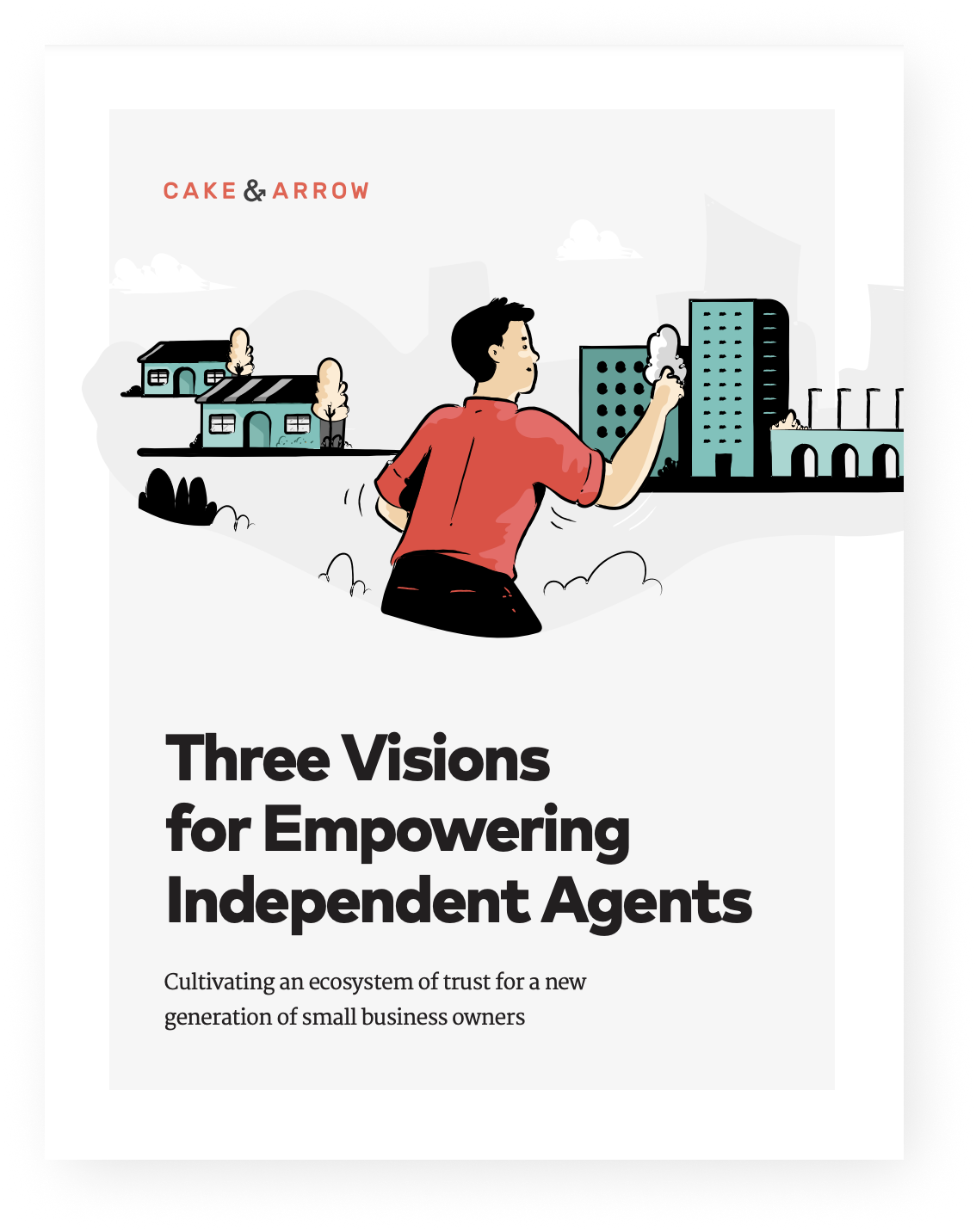
While tech innovation is fast transforming how people buy insurance, most innovation in insurance continues to be focused on direct-to-consumer (DTC). Yet the majority of P&C insurance sales still happen through an agent. Our research indicates that while 80% of consumers do not trust insurance carriers, they do trust agents, and for this reason, still prefer to buy insurance through an agent, rather than online.
If these numbers are any indication, insurance agents are not going anywhere, at least not anytime soon. Still, the process of buying insurance through an agent—for customers, carriers, and agents alike—remains cumbersome, plagued by long lapse times, a lack of transparency, large margins of error, and a lot of paperwork. These problems are deciding factors in why agents and customers choose to bring their business elsewhere and can lead to millions of dollars of lost premiums for carriers and a general distrust amongst agents and customers. Focusing on improving the agent-driven sales process is a win-win (win)—for customers, agents, and carriers. Below are a few simple ways that carriers can incorporate agents into their customer experience strategy and improve EDB (ease of doing business) for agents.
1. Ensure accurate quotes
Carriers must do everything they can to ensure that quotes are as accurate as possible and issued without rework. Quote inaccuracy leads to a breakdown of trust on all sides, causing both consumers and agents to lose trust in carriers, creating friction within the quoting process, and extending and convoluting the sale. No one wants to feel like there’s been a bait and switch.
It’s important to remember, however, that pricing sophistication, while a good thing for accurately pricing risk, can come at a cost. Because it requires additional data elements, it can be more expensive to rate. When, how, and if, those data elements are collected needs to be thoughtfully executed to balance ease of doing business, cost, and accuracy.
By exposing risk ratings, ordering reports early, and ensuring that the level of accuracy is the same between comp-raters and proprietary systems, carriers can speed up the sales process and, through transparency, create trust between agents and consumers.
2. Align technology with agent needs, your rules, and ACORD standards
Ensuring that as a carrier, you understand the information, systems, and tools agents need to service customers and that agents understand your rules can help eliminate unnecessary confusion on both sides of the sales process. Sales enablement tools and SaaS technology that are designed using contextual research on agents’ real selling processes greatly improve EDB for captive and independent agents.
Along these lines, two simple rules to follow are:
- Rule 1: Ensure agents only have to enter data once
- Rule 2: Equip agents with enough information to speak to their customers about how that data informs their premiums
Regarding the first rule, if you want to ensure you are easy to do business with don’t make an agent collect any more information than necessary and make sure they only have to collect it once. The burden is on the carrier to move and integrate that data correctly across all the downstream workflows.
When it comes to the results of the data—the quoted premium— the answer to how you came up with that number can’t be “it’s what the model determined” or “that’s what the black box spit out.” To provide their customers with clear and accurate answers to questions about premiums, agents need to be well informed as to how customer data was used to quote a premium. It’s your responsibility to provide them with this information.
Finally, make sure your technology accurately represents your rules and that this is transparent to the agent. Moreover, ensuring that any technology you implement is aligned with ACORD standards will create consistency between your technology and other systems agents are used to, further eliminating barriers to use. Remember, you want to make it as easy as possible for them to use your systems so they can go about their jobs.
3. Make servicing & claims as transparent as possible
When hailing an Uber with your phone, you know exactly where it is on the map, what kind of car to expect, who the driver is, and when your ride will be arriving—to the minute. Agents and customers want similar transparency into what is going on with applications and with claims.
Beyond transparency customers want timeliness, especially regarding claims. Unless two, three, or four steps in the claims process really do happen overnight or on the same day then your system shouldn’t update that way. Carriers have clearly defined steps and rules for adjusting and paying on a claim. Customers don’t want to be in the dark about those steps. Make clear to the customer what has, what is, and what will happen and update it in real-time.
Finally, invest in the technology needed to service the customer efficiently and fairly and inform the agent of what’s happening with their customer. Agents appreciate knowing key actions like a late payment or claim so that they can manage expectations with the customer. If customers can get an alert when their pizza goes from the oven to the box they should be able to know when their wrecked car has been estimated and what the amount is as soon as that information has been documented.
4. Bring agents along the journey of global transformation initiatives
Digital transformation in insurance is about more than just technology. It’s about creating a better experience for everyone and developing the processes and the technology needed to support it. Digitizing business as usual is not the solution. Rather, investing in deep user research and involving all the players involved in an experience to develop the best possible solution for the customer, the carrier and the agent is what will lead to truly transformational change.
As you are developing new sales enablement technology, share plans and get feedback from agents on in-progress work. This will not only provide you with valuable feedback but it can convert agents into your initiative’s most powerful marketing tool with their colleagues and customers.
__
According to a survey of 5,000 independent agents, 99.5% of insurance agents say that EDB is critical in choosing which carrier gets their business.
Being easy to do business with goes a long way to support agents in their relationship with customers. Agents know when quotes are not accurate and are frustrated by manual corrections. They will do whatever they can to shield their customers from those frustrations and sometimes that means choosing a different carrier for their customer’s business.
As carriers plan their global transformation initiatives, considering independent agents as a critical kind of user—as critical as say, a customer—can give them an important competitive edge over other carriers, making them a carrier of choice for independent agents, and the first carrier they go to when writing new business.
Report
Learn how the insurance industry can empower independent agents to empower and and connect their small business customers and cultivate trust for a new generation of small business owner
